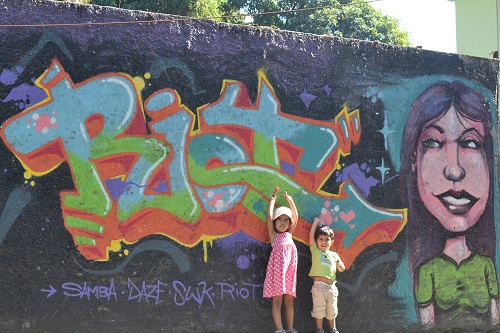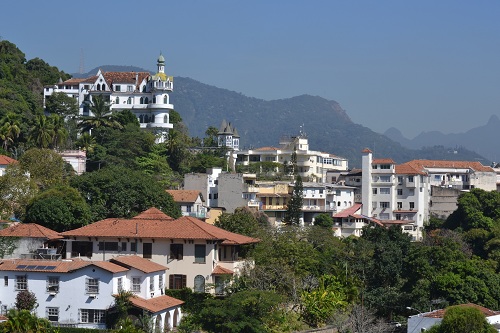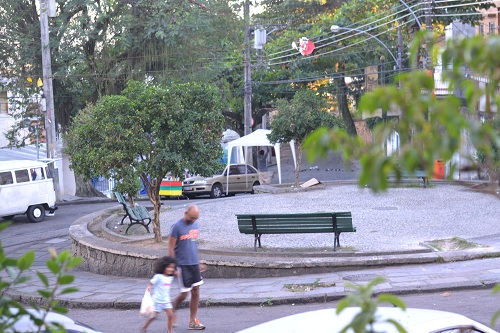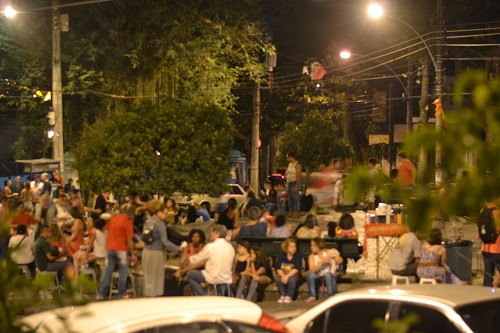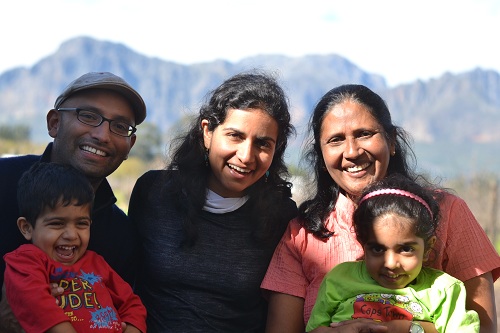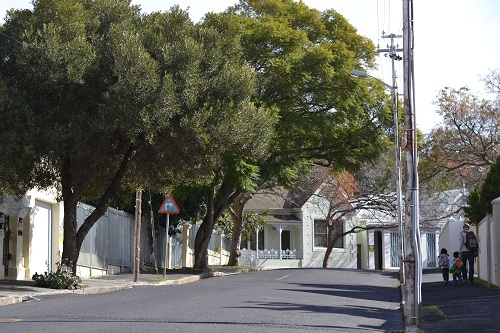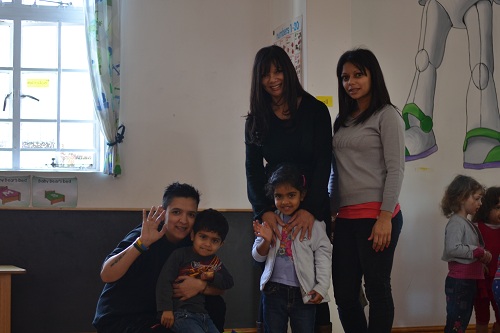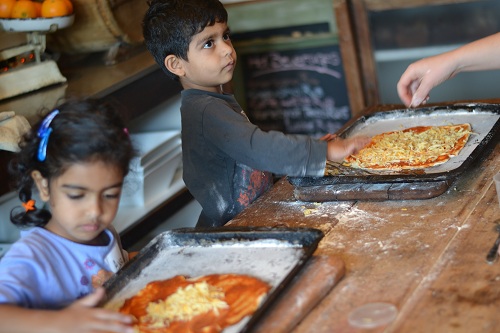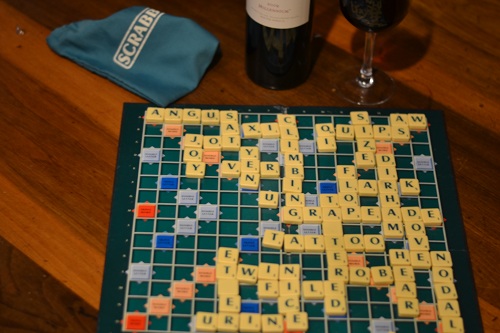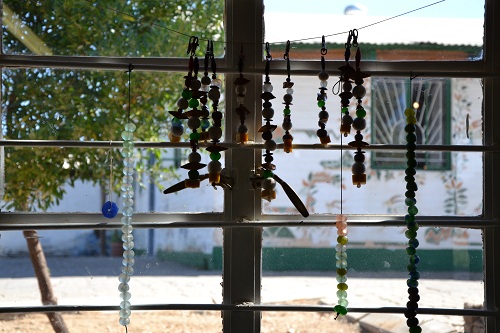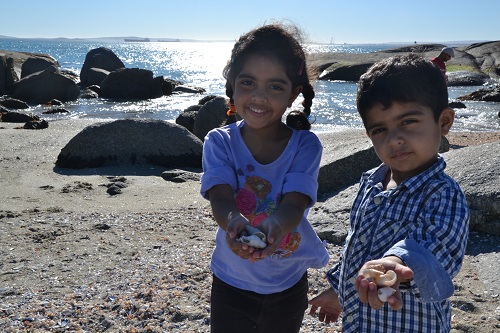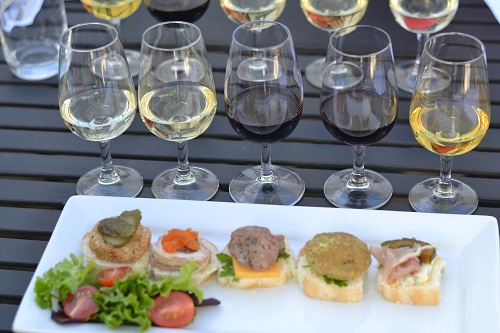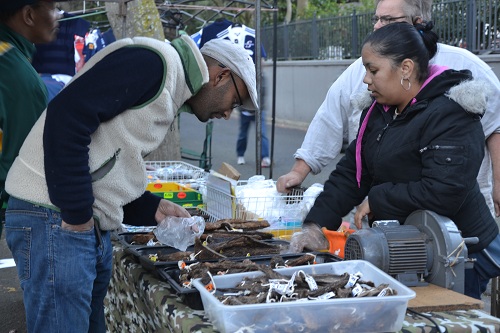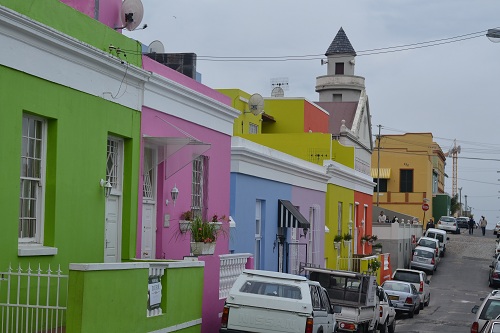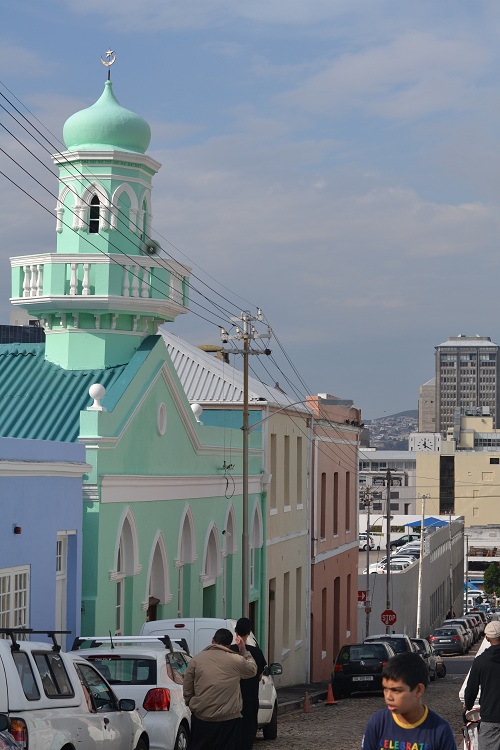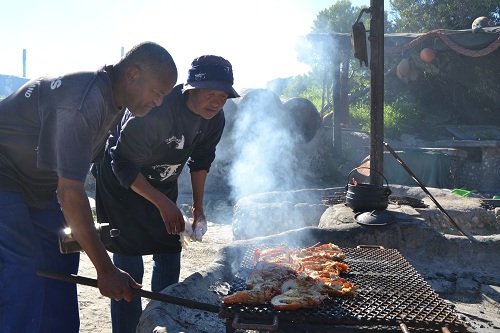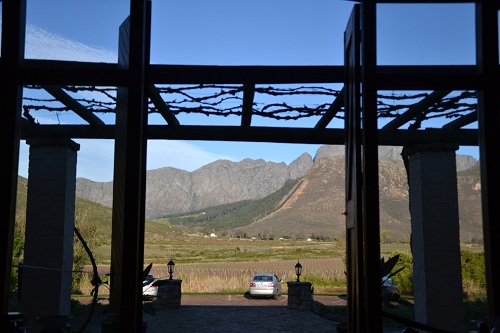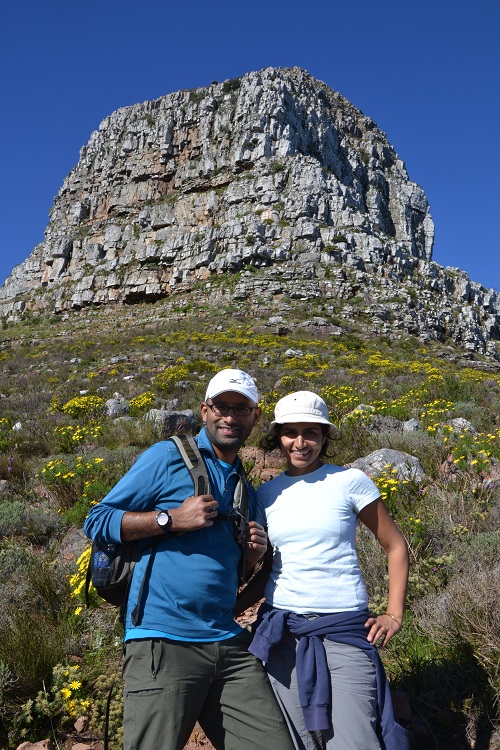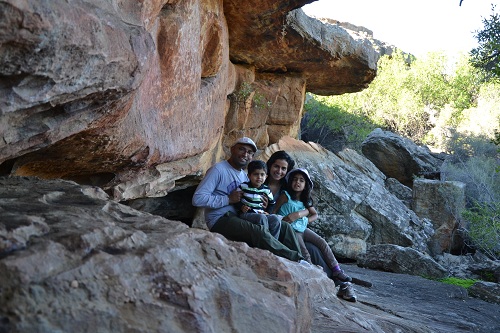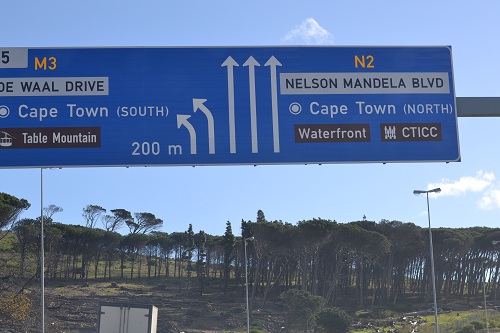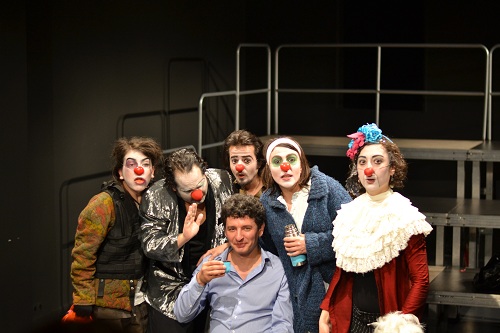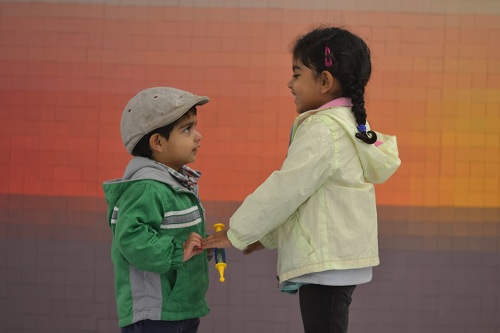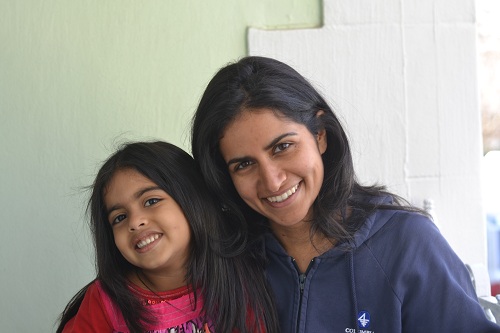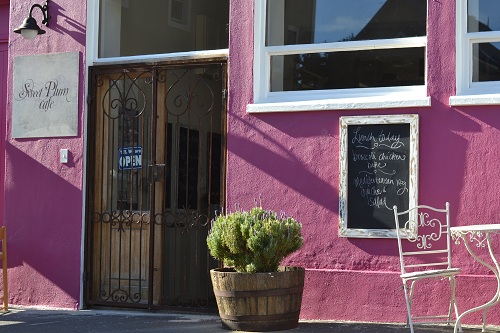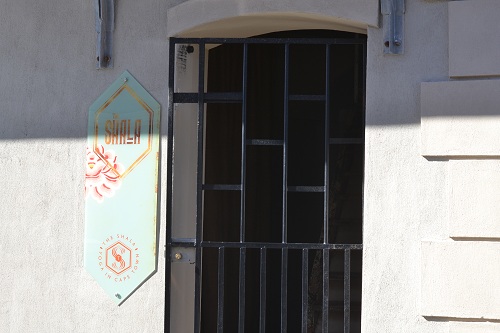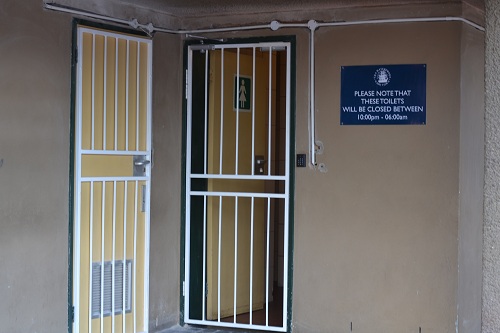When we were dating, Sandeep and I had a bunch of friends that used to hang out at the bar at Ipanema Restaurant in New York. The bartender was a friend who kept us fed with garlicky chicken wings and empadinhas and watered with endless rounds of caiparinhas. Then the casual bar got a stuffy makeover and an even stuffier bartender and our nights in Ipanema ended. Under the influence of cachaca we conjured up fantasies of the real Ipanema. We imagined blaring music, great food, copious alcohol and a unrelenting energy.
Today we finally made it to Ipanema and its famous 2 km long beach. The long beach is marked by postos, each having a unique character. Posto 8 signals its flavor with a large rainbow flag, Posto 9 is known for its alternative vibe and gorgeous people, and 10 for its beach sports scene, which includes everything from beach volleyball to tight rope tricks.
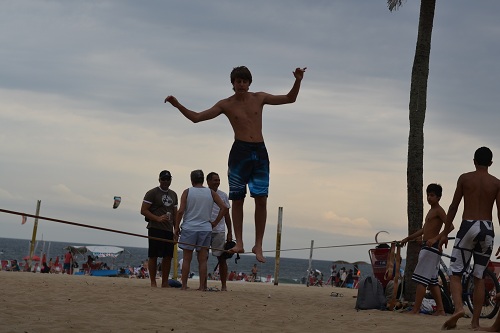
This clip from Anthony Bourdain gives a good sense of Carioca culture at Posto 9.
I thought I would be intimidated in a beach full of Brazilian babes in fio dental (dental floss). Ipanema has long been known as the trend starter for swimwear, including the male g-string and the beach graces many a list of World’s Sexiest Beaches. It turns out that the crowd in Ipanema is quite assorted. Old and young, fit and flabby, everyone engages in their own forms of sun worship. Little kids were drawing with chalk on the sidewalk, couples were running with their dogs, parents had kids at the back of cycles, and plenty of beach goers like us were just ambling about to take in the scene.
In case the people watching isn’t enough, the vendors that roam the beach in portable stores provide food, drink and everything from suntan lotion to bikinis. As I was watching this action (and our bags, since we were warned of rampant pick-pocketing on Rio’s beaches) Sandeep and the kids played in the water. Within an hour they came back several shades darker, although Ava and Kayan were disappointed that there weren’t enough shells on the beach.
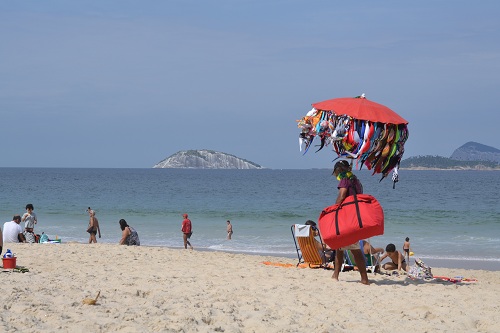
We were trying to figure out what would make a gal buy a bikini on a beach. Would it be a wardrobe malfunction? And it’s not as if she can try it on for fit. Interestingly enough we saw plenty of bikini tops under this guy’s umbrella, but no bottoms. Maybe that’s when you head to the pharmacy for more floss.
